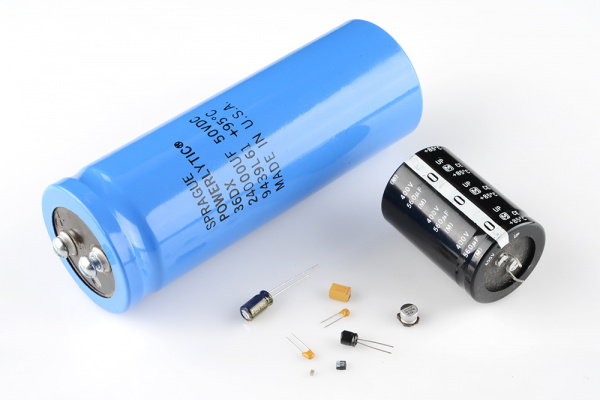Capacitors are used to store energy. But they aren’t batteries. So what are they used for and how do they work?

The Basics
Capacitors consist of two conductive plates separated by a non-conducting substance, or dielectric. On the outside, the two plates are connected to terminals, which can be used to connect to an electrical circuit. When charged, an electric field that stores energy exists between the two plates. That energy can then be used to power other components in the circuit.

Storing Energy
One large difference between a battery and a capacitor is that batteries produce energy with chemical reactions, but capacitors must be charged with something else. In other words, while batteries create energy, capacitors merely store it. The upside of this is that capacitors don’t lose their ability to hold a charge like batteries do, and can be reused over and over.
The amount of energy a capacitor can store is called its capacitance. The larger the capacitance, the more electricity the capacitor can store. The three ways to increase a capacitator’s capacitance are to (1) increase the size of the plates, (2) move the plates closer together or (3) use the best possible insulator for the dielectric.
Uses for Capacitors
Quick Use
Another difference between batteries and capacitors is that capacitors can dump their entire charge very quickly, whereas batteries take a while to do so. This makes capacitors perfect for high-speed use, such as camera flashes.
Even Out Power
Because capacitors can store extra energy for later use, they can be used to even out a power supply. If there are spikes in a voltage suppply, capacitors are a great choice to even things out by absorbing the energy peaks and filling in the energy valleys with stored energy.
Want to learn more about capacitors? Check out this post that delves into all the nitty-gritty on capacitors.


helpful information, What is a